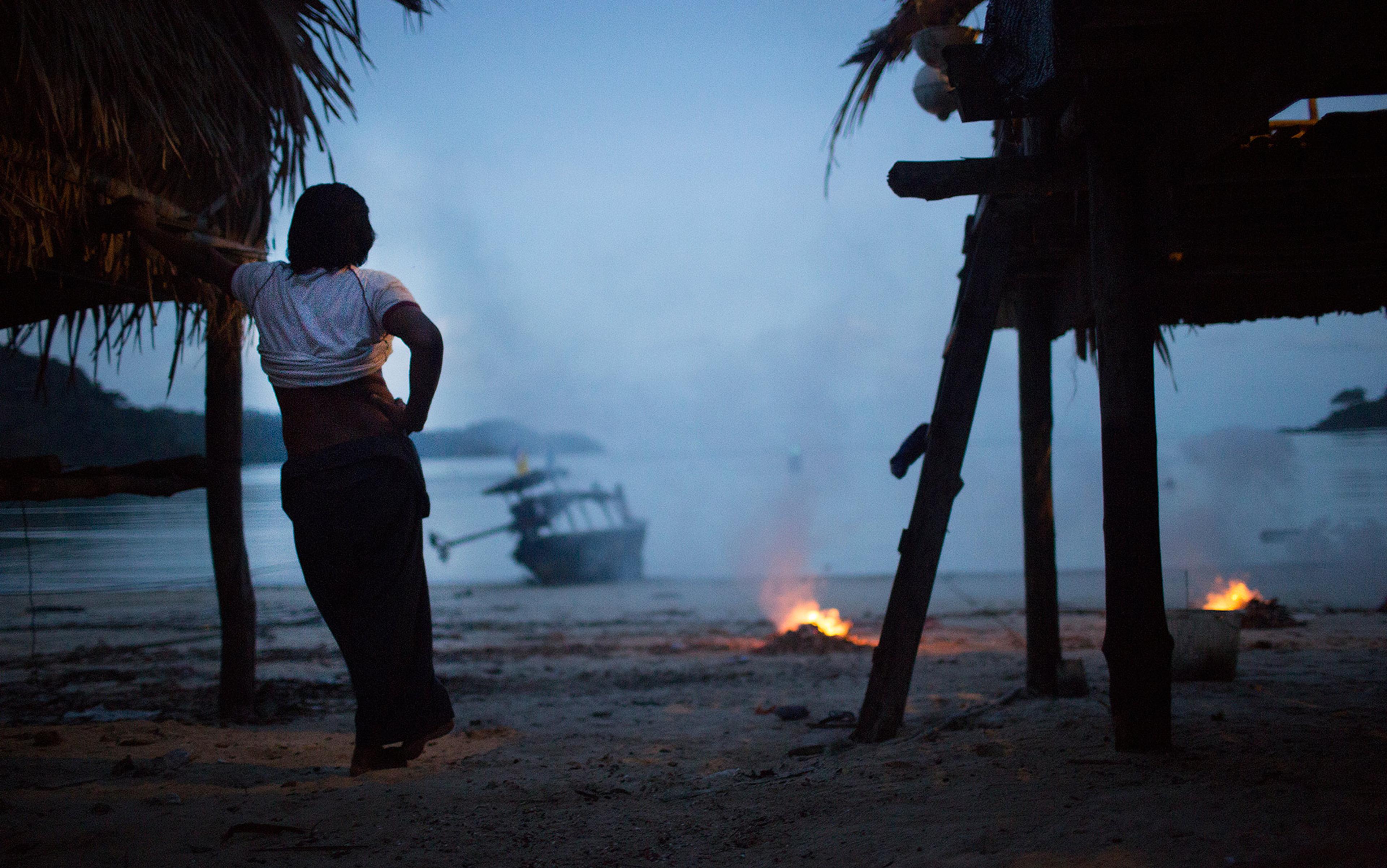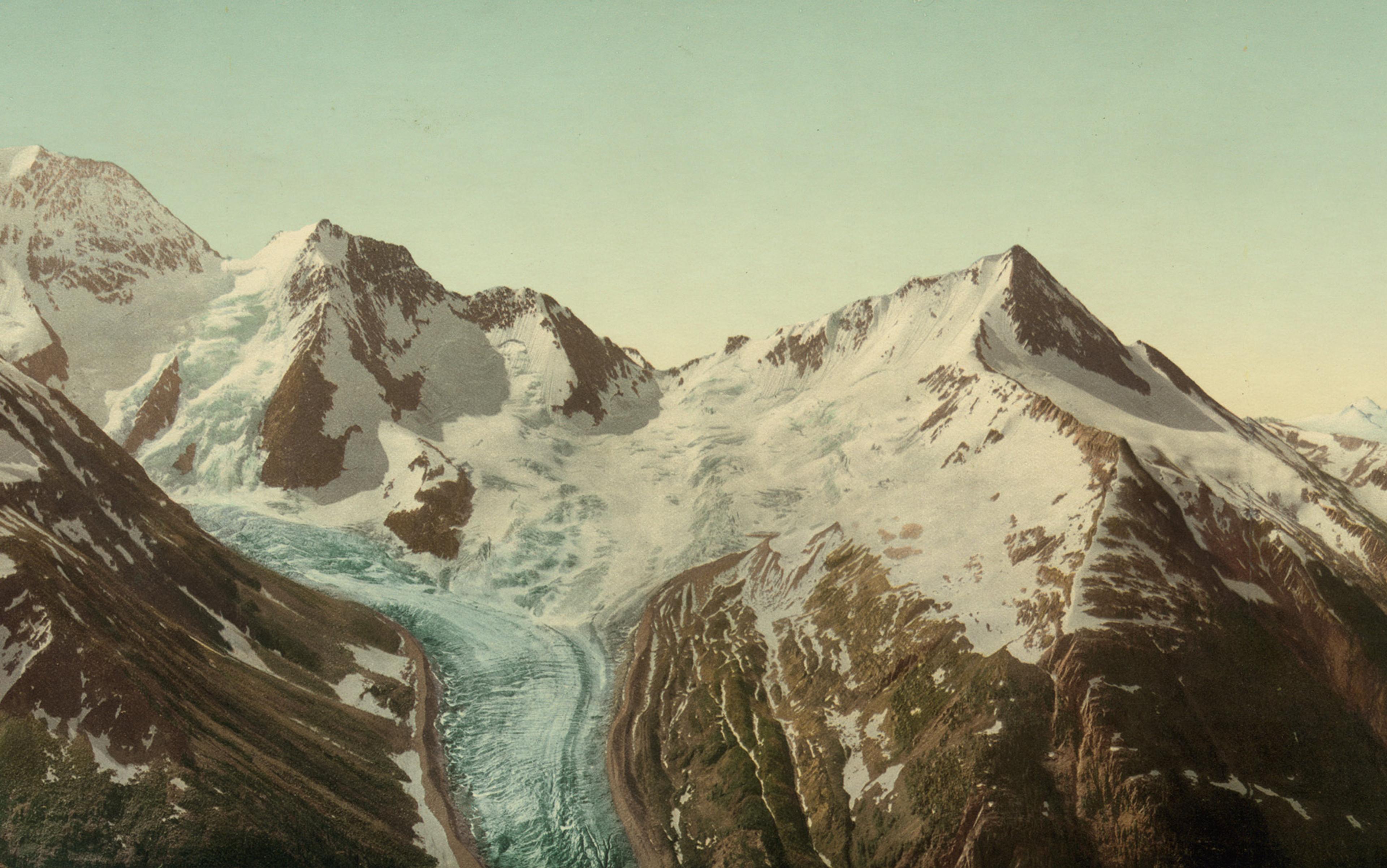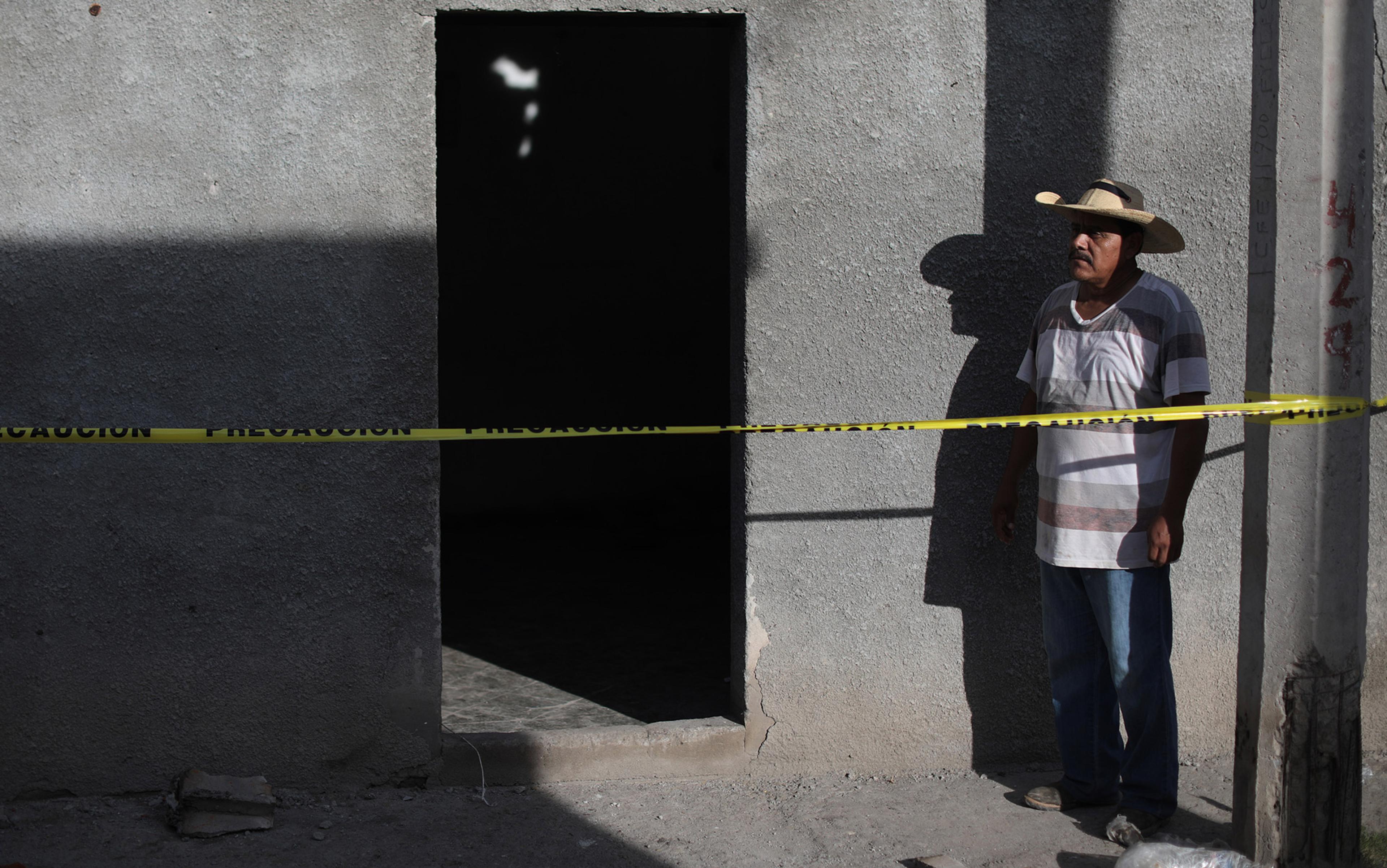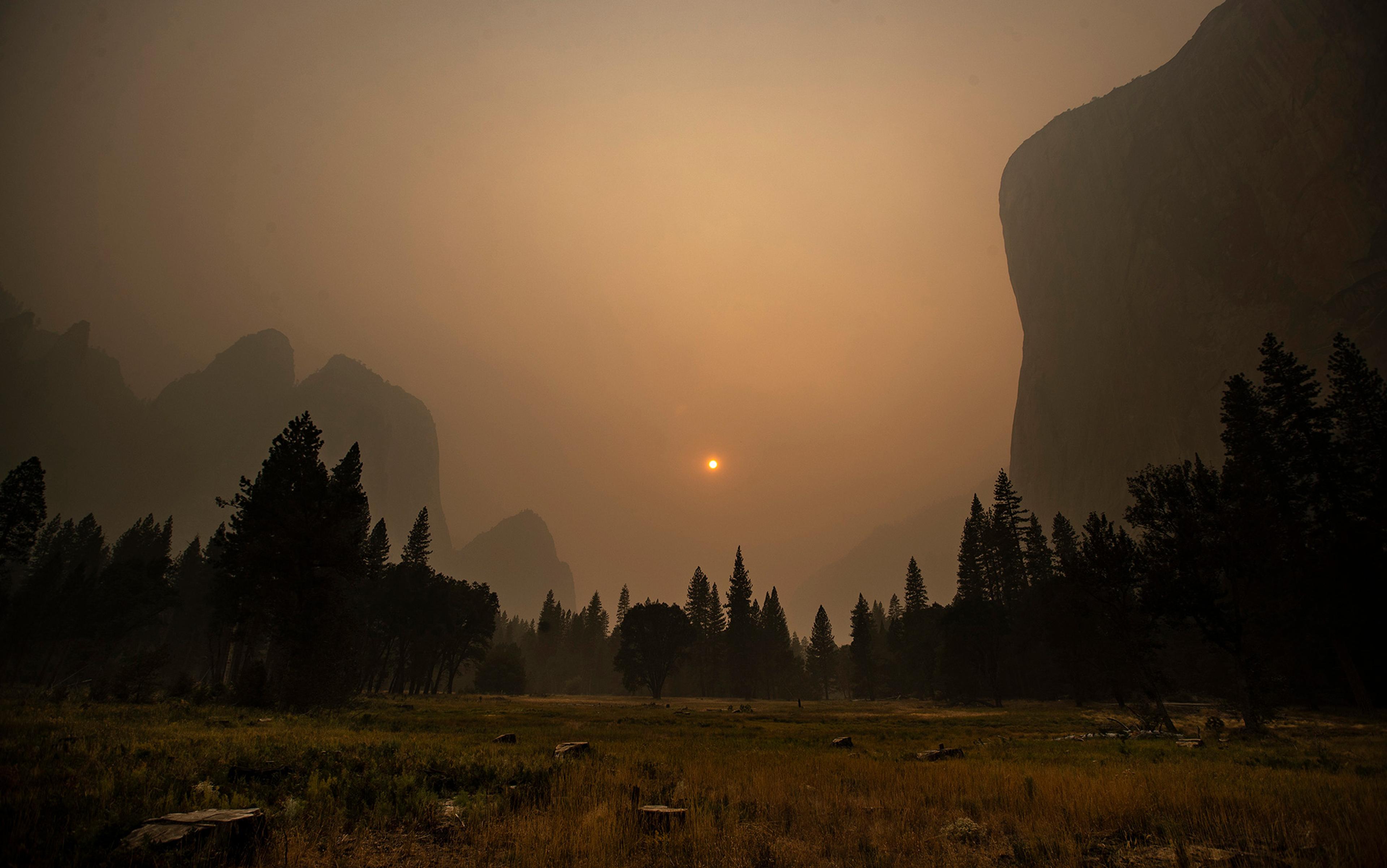If you happened to be at the right place in southern Mexico in the early 1980s, you might have encountered a strange-looking hill poking up from a thick tropical jungle. Covered in trees, it was known as ‘El Chichón’, the Spanish slang word for a small bump.
At the time, few realised the hill was a volcano, and those who did never expected it to do anything, since no activity had been observed in centuries. All that changed in the spring of 1982.

El Chichón in 1974. Note the regular hilltop. Photo by Paul Damon/CC BY-NC-ND 4.0
Back then, volcanoes were in the zeitgeist. Two years prior, the Mount Saint Helens volcano in the United States spectacularly blew half of its flank away. It would go down as one of the most iconic and studied eruptions in history, and an inflection point for modern volcanology. The fact that the blast was sideways was unexpected and killed 57 people, but the eruption itself was anticipated through monitoring, and authorities evacuated more than 2,000 people in advance.
El Chichón, by contrast, caught everybody by surprise, with three separate explosive phases. It measured 5 on the volcanic explosivity index (VEI), which describes eruption scale – the same as Mt St Helens, as well as Vesuvius in 79 CE. Hot avalanches of rock, ash and gas flattened whole swaths of the jungle, setting off fires, damming rivers and destroying buildings. Ash from the explosions covered regions 70 km away, collapsing roofs and creating mudflows (lahars), and volcanic particles even reached Guatemala. Little was known about the number of people living in this region at the time, but it is thought that at least 2,000 died and 20,000 were made homeless in Mexico’s worst volcanic disaster in modern times.
In 2006, I found myself looking down over El Chichón’s kilometre-wide crater. While I was retrieving samples from the hot, bubbling, acidic lake, which alternated from cyan blue to emerald green throughout the year, the ground shook as the geothermal gases fought their way to the surface – an unsettling reminder that I was in the crater of a very active volcano. The trip was one of my most formative life experiences, and one story a local told me has stayed with me ever since. When the 1982 eruption began, their relatives had sought shelter in the village church from the heavy ash and pumice rain. They were found weeks later, along with dozens of other villagers – all dead under the collapsed roof, crushed under the weight of ash.

Church in the village of Naranjo, located about 8 km south of El Chichón, 2 June 1982. Photograph by Wendell Duffield/CC-BY-NC-ND

The author above the El Chichón crater in 2006. Photo supplied by the author
The striking contrast between El Chichón’s peaceful appearance and its devastating history taught me that volcanoes often conceal their potential beneath a deceptive calm. And it’s not the only volcano to hide its true power – they are not as rare as one might think. Around 75 per cent of eruptions with an explosivity of VEI 5 (like El Chichón) were preceded by at least a century of silence. That percentage is even higher – 90 per cent – for volcanoes ranked VEI 6, which are 10 times more powerful. And in volcanic regions like the Pacific islands, South America and Indonesia, we can expect explosivity every seven to 10 years from a volcano with no previously recorded eruption.
Volcanoes can have severe impacts worldwide: grounding aircraft, disrupting trade routes, altering the climate
Yet scientific attention remains unevenly distributed. For example, there have been more studies published about Mt St Helens alone (1,437 studies) than all 123 Indonesian volcanoes combined (~1,326 studies). And most volcanoes are not monitored: only around 600 of the 1,302 volcanoes known to be active during the Holocene are equipped with any monitoring instruments. This stark disparity is mirrored in the media and popular culture, which focus on examples like Yellowstone, Etna, Kīlauea or Vesuvius. With their stunning lava displays and hydrothermal emissions, these famous volcanoes may be providing the ultimate misdirection, causing us to focus on the wrong characters in the story of Earth’s relationship with humanity.
As of 2015, at least 340 million people worldwide live within 30 km of an active or potentially active volcano. Considering global population growth of more than half a billion since then, this estimate is now likely far too conservative – a troubling indication of just how vulnerable millions remain to unexpected volcanic disasters. But you don’t need to live near a volcano to be vulnerable. It’s become clear in recent years that volcanoes can have severe impacts worldwide: grounding aircraft, disrupting trade routes, and altering the climate. Meanwhile, historical and archaeological analysis has implicated volcanoes in droughts, population declines and even societal collapse.
Over the centuries, our understanding of volcanoes has evolved significantly, but we are still failing to prepare for the fact that the next world-changing eruption could come without warning, emerging from a small bump in a barely monitored jungle that has been quiet for centuries.
Long before volcanoes were understood as geological phenomena, humans interpreted them as spiritual and mythic forces – homes of gods or portals to underworld realms, from Hephaestus beneath Mt Etna and Pele on Hawaiʻi, to the Incas in Peru, where humans were sometimes sacrificed in response to volcanic catastrophes. Then came the Enlightenment and the birth of scientific volcanology. By 1841, the world’s first volcanological observatory was established on Vesuvius in Italy. Into the 20th century, volcanic activity became understood in terms of geology, plate tectonics, magma chambers and eruptive processes.

Volcano-monitoring equipment at Volcán de Colima, Mexico. Photo supplied by the author
Today, the seismometer is still the cornerstone of volcano monitoring. As magma and its gas make their way to the surface, they can stretch or break the crust, triggering detectable earthquakes. GPS sensors, tiltmeters and even satellite-based remote sensing can also monitor surface changes, alongside instruments that measure gas. When volcanoes are well understood and well monitored, and, crucially, if the communication between the scientists and the public is clear, eruptions can often be anticipated. There have been numerous examples of successful evacuations and community preparedness that have saved tens if not hundreds of thousands of lives.
But volcanoes still surprise us. Considering that the vast proportion of unrest – such as earthquakes, gas release or the ground deforming – does not lead to any eruption, interpreting these signatures to provide reliable forecasts is difficult. This proportion of baseline activity is even larger for so called ‘restless calderas’ like Yellowstone or Campi Flegrei in the Bay of Naples, which are famous for their regular, non-eruptive activity over centuries. Even if some eruptions can be forecast, what is more difficult is knowing the size and style of the impending eruption. Many volcanoes (like El Chichón) can display a range of eruptive styles, from large explosive eruptions with ash that can close airspaces, to little lava flows (or domes) that generally have a smaller hazard footprint. For this, we need a geological history of its past eruptions, to see what a volcano could be capable of and its typical behaviour over the long term.
Volcano-monitoring has proved to be both incredibly useful but also imperfect for forecasting eruptions
Volcanoes can also catch us out with their short warning times – more than half of the largest explosive eruptions since the early 1990s have come with fewer than 30 days of precursory warning signs (eg, Kelud in Indonesia in 2014, or Calbuco in Chile in 2015). Others slowly deform the ground for years, sometimes decades, before earthquake activity suddenly wakes up in the days before eruption (eg, Okmok in Alaska in 2008, or Grímsvötn in Iceland in 2011). These tight timelines represent a huge challenge for providing early warnings, especially when considering the time and resources required to install monitoring instrumentation for the two-thirds of the world’s volcanoes that don’t have any.
So why do some volcanoes give us little warning before they blow? It’s got to do with how the magma under the volcano gets ready for the eruption. It sounds somewhat counterintuitive, but some volcanoes effectively trigger themselves. Magma is full of gases, like carbon dioxide, sulphur, even fluorine and chlorine, but the most abundant gas is water, and this can drive explosive eruptions when it forms bubbles, dragging the magma rapidly to the surface like a million hot-air balloons. When magma starts to cool and crystallise, water can become super-concentrated and start to pressurise the magma chamber, with little to show at the surface for those monitoring the eruptions, aside from shallow earthquakes as the rocks around the chamber break under the pressure some weeks prior. When the pressure becomes too much for the surrounding rocks to withstand, the magma chamber ruptures and the bubbly magma rapidly rises to the surface in minutes to hours, shattering into millions of tiny pieces of ash.
All this is to say that volcano-monitoring has proved to be both incredibly useful but also imperfect for forecasting impending eruptions. The science of forecasting remains chronically underfunded. To put this into perspective: if you were watching movies in the 1990s, you might recall Hollywood blockbusters such as Dante’s Peak and Volcano. Adjusted for inflation, these films combined cost more than $370 million – the estimated annual cost of a robust global volcano-monitoring system, which we desperately need but lack. The problem is particularly acute in regions such as Southeast Asia, which receive markedly less attention than, say, North America or Europe. Indonesia, for instance, has 70 per cent of its population living within 100 km of a volcano, yet its volcanic past remains comparatively understudied and underreported.
But as we have learnt in recent decades, the reach of a volcano can be much bigger than its local explosions and lava flows. To understand why, look no further than the global impacts of El Chichón.
As Mexico began to recover from the regional loss and damage in the wake of the 1982 eruptions, little did volcanologists and climatologists know at the time but the eruption’s fatal impacts had not finished by a long shot. Instead, it would take the next year for sulphur gases emitted by the volcano to spread, interact and grow in Earth’s stratosphere, triggering climatic consequences on the other side of the world. As with many climate impacts, it was the world’s most vulnerable regions and people that felt the brunt. In east Africa, a region already suffering decades of drought, civil war and malnutrition, came an even more acute, but this time volcanically induced drought that lasted two years. The result of these compounding factors was the infamous 1983-85 Ethiopian (and East African) famine, with a death toll that most estimate at close to a million people. However, the fact that a volcano was likely to blame was discovered only in 2013. Since then, countless more studies have shown how large eruptions have triggered extreme drought conditions in the same regions of North Africa and the Middle East. But how can an eruption in one part of the world affect somewhere so far away?
The effect of millions of tonnes of sulphuric acid aerosol in the upper atmosphere considerably reduces the amount of sunlight reaching Earth’s surface, and effectively cools the planet: about 0.3-0.5 degrees Celsius in the case of El Chichón. No wonder then that it has been touted as a solution to mitigate the worst effects of climate change. However, these abrupt shifts in Earth’s delicate radiation budget, especially when unevenly distributed, can affect our highly interconnected climate systems. In the case of the El Chichón eruption, the problem arose from the asymmetry of cooling: far more in the northern hemisphere (the site of the eruption) compared with the southern hemisphere. This imbalance forced a southward shift of the northern hemisphere summer monsoon rain belt, and caused drought in the northern part of the monsoon regions (like Ethiopia and the Sahel).
Most volcanically induced climate shocks are ‘orphans’: we don’t know what volcano parent they came from
Future volcanic events could be far worse. Much larger sulphur-belching eruptions have occurred in the past – we know this by scanning ice cores in Greenland and the Antarctic, where large ‘sulphur spikes’ correlate with temperature shifts observed in tree rings or corals. Scientists who have formed the Volcanic Impacts on Climate and Society (VICS) group have found that most of the cold summers (think summer snowfall, frosts and frozen water bodies) in this 2,500-year record coincided with volcanic eruptions. When historians and archaeologists waded in, they found correlations with various droughts, storms and monsoons recorded in history. Some were even associated with significant historical events like the collapse of Chinese dynasties.
With such dramatic impacts on the climate and societies, you might believe that the source of these eruptions would be obvious, overt and surely captured in historical or geological records, but most of these volcanically induced climate shocks are ‘orphans’, which means we don’t know what volcano parent they came from. Less than a quarter of the 127 large sulphur-producing eruptions identified between 800 and 1890 CE have been assigned to a volcano, even eruptions as recent as 1809, but this is starting to change.
In recent years, scientists (often associated with the VICS group) have successfully matched volcanically induced climate shocks via orphan eruptions to their volcanic parents. One way to do this is to identify microscopic ash particles in ice cores within the same horizons as the sulphur spikes, and match their geochemical signature with volcanic ash records on land. In this elaborate game of ‘whodunit’, the revelation of the culprit behind these global shocks is rarely one of the ‘main character’ volcanoes; instead, these are volcanoes that few – sometimes, not even volcanologists – have previously heard of, such as Rinjani in Indonesia, Okmok in Alaska, or Zavaritskii on the remote Kuril Islands in the Russian Far East. It reinforces the notion that it’s often the volcanoes we’re not watching that are responsible for global impacts.
The science of volcanoes and their relationship with the climate is hard to keep up with: it’s constantly evolving, as academics run new climate models, find more temperature records, or discover new historical sources. The prevailing paradigm posits that a large eruption at the tropics will inflict the greatest climate shock, as the sulphur aerosol veil is able to spread in both hemispheres. However, this is now being challenged in several ways: it has been suggested that eruptions from high-latitude volcanoes (think Alaska or Europe), could cause up to 7.5 times more cooling in the northern hemisphere for an equivalent sulphur exhalation, potentially through feedbacks such as growth of ice at the poles or alterations to oceanic currents. The other discovery relates to the cumulative effect of multiple eruptions, which can intensify and lengthen their climatic response.
One such example comes from the mid-6th century, which marked the coldest decade in the past two millennia. It was the start of a period called the Late Antique Little Ice Age, a period of climate chaos that has been associated with rising and falling civilisations, pandemics, human migration and political turmoil. This period was triggered by not one but a cluster of at least two closely spaced large eruptions, one of which originated from the northern hemisphere (in 536) and the other from the tropics (in 540). In a period that some historians deemed to be ‘the worst time to be alive’, the eruptions severely cooled the northern hemisphere by an average of 1.5 degrees Celsius, with some regions experiencing far cooler temperatures. Snow fell in the summer in China, and there were reports of crop failure across multiple regions including Ireland, Scandinavia, Mesopotamia and Asia, resulting in widespread famine. Perhaps the Byzantine historian Procopius described it best: ‘For the Sun gave forth its light without brightness, like the Moon, during this whole year,’ but the climatic chaos may have been the least of their problems.
Shifts in regional climatic patterns can severely disrupt animals and ecosystems that may host pathogens. Coupled with malnutrition and famine from widespread crop failures, as well as migration of humans and animals in this period, this was thought to have a large influence on both the inception, vulnerability and spread of disease. Indeed, one of the worst pandemics in the historical record took hold just a year after the second eruption in the cluster, the infamous Plague of Justinian. This went on to decimate the eastern Roman Empire, with some even suggesting it may have wiped out 10-25 per cent of the world’s population at the time. Scientists have now realised that there have been at least 11 such extended cold periods in the past 8,000 years and, from historical learnings, it’s the longevity of climatic instability that really tests societal resilience.

Over the past 2,000 years, cold periods (blue lines) have often been correlated with large eruptions (orange triangles). Author’s own annotations on a graphic by Büntgen at al, 2020
Volcanology is still in its infancy as a field, and I have highlighted only some of the gaps in our knowledge, but there’s been great progress in some aspects that I have not covered here. Importantly, there have been enormous successes in our field where tens of thousands of lives have been saved, such as at Kelud in 2014, Pinatubo in the Philippines in 1991, Merapi in Indonesia in 2010, and La Soufrière on Saint Vincent in 2021, to name just a few. When we study volcanoes to understand their threat, when we monitor volcanoes sufficiently with instruments, and we educate people to prepare communities for eruptions, volcanologists have – despite underfunded observatories and limited resources – been enormously successful at saving hundreds of thousands of lives.
My fear for some time, though, is that we will be caught out by eruptions from hidden volcanoes that we’re not looking at, like El Chichón – those that erupt with little warning, or large orphan eruptions that can affect the global climate like in the mid-6th century. If we have eruptions like these, especially near regions with high populations, or where we have a confluence of globally important infrastructure or trade routes, it could trigger cascading and globally significant impacts. In the case of a volcanically induced climate shock, it could be catastrophic for our food, water, energy and economic security if we fail to react or prepare for this properly. Despite the scale and magnitude of these risks, there is no international body responsible for coordinating global preparedness and response efforts.
Proactive, anticipatory preparedness can save countless lives
On a more regional scale, we must shift attention to under-monitored volcanoes in densely populated regions – these suffer from an inequality of attention compared with volcanoes with frequent or recent eruptions. The common incidence of short warning times highlights that monitoring by itself is not enough; we need early warnings as the eruption begins (known as now-casting), as well as education and preparedness in the event of an eruption whose impacts transcend international borders. This is where we believe the greatest threats lie, and by investing in early anticipatory preparedness – which is far more cost-effective compared with post-disaster aid – this is where the biggest difference can be made.
To advocate for these crucial changes and help bridge the gaps in global volcanic preparedness, this year – supported by the Centre for Global Equality and a diverse international network of scientists, humanitarians and industry experts – my colleagues and I founded the Global Volcano Risk Alliance, the first charity dedicated exclusively to mitigating global volcanic threats. Our aim is to shift global attention toward volcanoes with significant yet overlooked risks, where proactive, anticipatory preparedness can save countless lives. By focusing global efforts on improved monitoring, international coordination, advocacy and widespread education, we aim to harness this motivated community effort to help prepare for – and perhaps even prevent – the next volcanic disaster.
As I think back to standing on the edge of El Chichón’s crater nearly two decades ago, remembering the relatives whose lives were cut short by the church roof that couldn’t withstand the volcanic ash, I’m reminded why this work matters. Volcanoes may hide their threats from view but, through global cooperation, awareness and preparedness, we can ensure that communities won’t have to face these hidden dangers unprepared again.






